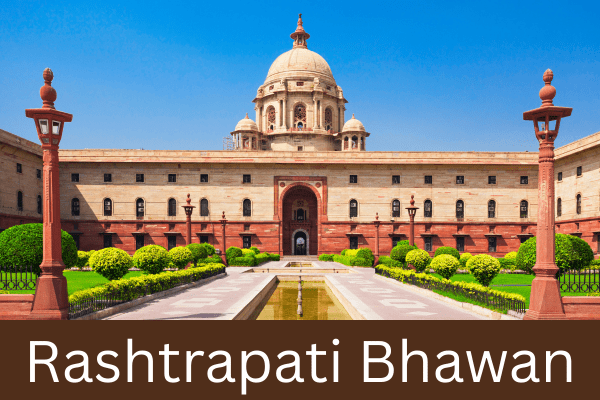When one speaks of India’s architectural splendors, the majestic Rashtrapati Bhawan inevitably comes to mind. As the official residence of the President of India, this iconic structure stands as a powerful symbol of Indian democracy, heritage, and architectural finesse. Situated atop the Raisina Hill in New Delhi, Rashtrapati Bhawan is not merely a residence; it is a living legacy that captures the cultural blend and political history of the nation.

Architectural Marvel with a Blend of Cultures
The Rashtrapati Bhawan was designed by two prominent British architects — Sir Edwin Lutyens and Sir Herbert Baker — during the British colonial rule. Completed in 1929, the building was originally constructed to serve as the residence of the British Viceroy of India. After India’s independence, it was renamed and repurposed as the home of the Indian President.
Spanning a staggering 330 acres, the Rashtrapati Bhawan is a magnificent example of neo-classical architecture with influences from Indian traditions. The grandeur of its 340 rooms, long corridors, wide open courtyards, and beautifully manicured gardens is unmatched. What makes it unique is the harmonious incorporation of Indian architectural motifs — such as Buddhist-style railings, Mughal-inspired pavilions, and Hindu temple brackets — into a fundamentally western classical design.
Inside the Halls of Power
The entrance through the east gate leads visitors up a grand staircase to a majestic portico. At the heart of the building lies the Durbar Hall, a space used for ceremonial functions and swearing-in ceremonies. The hall’s dome, inspired by the Buddhist Stupa, adds a spiritual aura to the political sanctum. Another notable room, the Ashoka Hall, is decorated with intricate Persian-style murals and is often used for state functions and diplomatic events.
The Bhawan also houses several State Rooms, used to host visiting foreign dignitaries and national events. These halls speak volumes of the building’s elegance and functionality.
The Jaipur Column and the Mughal Garden
Just outside the Bhawan gates stands the towering Jaipur Column, a gift from the Maharaja of Jaipur. The column, made of sandstone and crowned with a bronze lotus, adds both aesthetic and symbolic value to the premises.
The Mughal Garden, spread across 15 acres within the complex, is one of the most exquisite features of Rashtrapati Bhawan. Open to the public during the annual Udyanotsav, the garden showcases a mesmerizing variety of flowers, herbs, and exotic plants, arranged in traditional Mughal-style patterns. It is not only a delight to the senses but also reflects the confluence of nature and governance.
Conclusion
The Rashtrapati Bhawan is not just a historic building; it is a symbol of India’s evolution from colonial rule to a sovereign democracy. From its majestic halls to its peaceful gardens, every stone of this residence tells a story of India’s rich cultural tapestry and the enduring legacy of its democratic spirit. A visit or even a glance at this architectural gem instills pride in every Indian heart.
